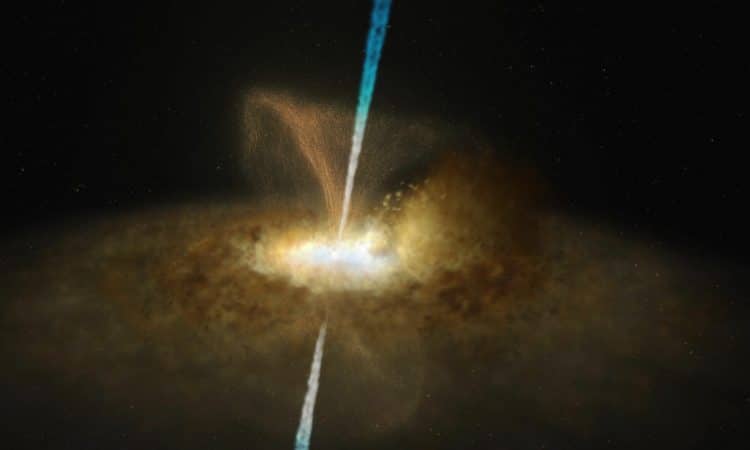
Using the Circumgalactic H-alpha Spectrograph (CHαS), astronomers took spectroscopic observations of a nearby active galaxy known as Messier 77. They detected a very extensive structure of ionized gas around this galaxy.
The discovery was reported in a paper published on the arXiv preprints server and accepted for publication in The Astrophysical Journal.
Messier 77 (or M77 for short, also known as NGC 1068) is a barred spiral galaxy located about 47 million light-years away. It hosts an active galactic nucleus (AGN), which globally ionizes the gas in its disc and halo.
type 2 Seyfert galaxy and is considered to be a prototype of this class.
The galaxy is estimated to be 90,000 light-years in diameter, and its mass is about 1 billion solar masses.
A very extensive structure of ionized gas around this galaxy
Recently, a team of astronomers led by Nicole Melso of Steward Observatory in Tucson, Arizona, used CHαS on the 2.4 m Hilter Telescope at MDM Observatory in Arizona to take wide-field spectral images of the galaxy Messier 77. The main purpose of their observations was to inspect the distribution of ionized gas around this galaxy, they write
“We have mapped the wide-field, very low surface brightness hydrogen-alpha emission lines around NGC 1068 using the recently commissioned Circumgalactic Hα Spectrograph (CHαS),” the researchers wrote.
Melso’s team identified a , located beyond the previously detected filamentary structures in this galaxy, towards the edge of the CHαS field of view.
This emission was found to be in the galactic halo, at an angular distance of about 292 arcseconds from the galactic center.
The emission turned out to be in the galactic halo
Astronomers have labeled the newly discovered extended structure of ionized gas a ‘ribbon’. Based on observations of CHαS, it was found to have a projected physical radius of about 66,500 light years.
The data collected indicate that the gas is not associated with any known galactic structure or tidal features. Furthermore, unlike what is seen in the filaments closer to the galaxy, the gas is slightly misaligned with respect to the current axis of the central jet.
The results also suggest that the gas is most likely composed of young stars embedded in hot gas with line emission ionized by a mixture of processes.
However, further investigations of this gas should be carried out to shed more light on its origin and composition.

